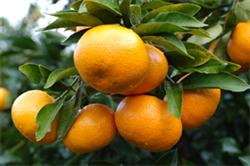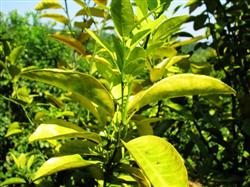Control measures of Citrus foot Rot

Distribution and harmful symptoms: foot rot, also known as skirt rot, is a root and neck disease, which occurs in all citrus areas in China. It harms the citrus root neck and the main root cortex, and the diseased bark is brown with the smell of lees and often exudes gum. Under the dry strip, the disease part cracked and hardened, and the boundary between it and the healthy part was obvious. At the initial stage, it only damages the tree epidermis and then expands to the cambium and even the xylem. The disease spot spread vertically and horizontally to 20 cm from the ground, down to the root group, to the trunk ring cutting led to plant death, some or all of the leaves of the diseased tree were yellowed, and the diseased tree had more flowers and less fruit. The disease usually occurred from April to August, and the sweet orange rootstock suffered the most. Prevention and control methods can be divided into agricultural control and chemical control, and attention should be paid to other comprehensive measures. 1. Agricultural measures: ① uses disease-resistant rootstocks, which is the most economical and effective way to control the disease at present. ② strengthens cultivation management, timely digging drains, shallow planting, no intercropping of long-stalk crops, ring or trench application of organic fertilizer, non-dry application of chemical fertilizer, control of trunk pests. ③ replaced rootstocks, planted 3 or 4 disease-resistant rootstocks around seriously diseased trees, and then grafted them to the base of the trunk, combined with heavy pruning, digging rotten roots and topdressing outside roots. Second, chemical prevention and control: remove the soil from the root neck disease, scrape off the rotten part, and then apply "tree protection general" to make the disease spot fall off quickly and protect the wound to heal healthily. Third, do a good job in the drainage and irrigation system: prevent stagnant water in the orchard; at the same time, control longicorn beetles and bugs in time; when weeding in mid-tillage, we should avoid damaging the basal bark, which also plays a certain role in reducing the disease.
- Prev

Citrus fruits are rich in more than 30 nutrients.
At present, there are more than 30 kinds of human health substances in citrus fruits, including flavonoids, monoterpenes, coumarins, carotenoids, propanols, acridone, glycerol lipids and so on. Flavonoids there are three types of flavonoids in citrus fruits: ⅰ is represented by rutin.
- Next

Symptom Identification and Prevention and Control techniques of Citrus Huanglong Disease
Citrus Huanglong disease is also known as "orange cancer". A bacterial disease caused by phloem, which is spread by grafted seedlings and an insect called citrus planthopper, does great harm to citrus. If allowed to spread, it will cause a fatal blow to the citrus industry. Great attention must be paid to it.
Related
- Moge, come on! The staff of the peasant association in the producing area of cantaloupe were frightened when the crowd gathered.
- Causes and Solutions of low Fruit setting rate of Apple
- Symptoms and control measures of passion fruit virus disease
- Fruit growing lesson: how do apple orchards keep high yields?
- Can you build orchards in the mountains? What are the pros and cons?
- How to manage the coloring period of Crisson grape?
- This paper introduces the processing technology of two kinds of fig products.
- How much is a month for retired teachers in rural areas by 2020?
- How can strawberry planting increase sugar content? We should pay attention to management in many aspects.
- What are the cultivation techniques on how to improve the yield of golden fruit?

